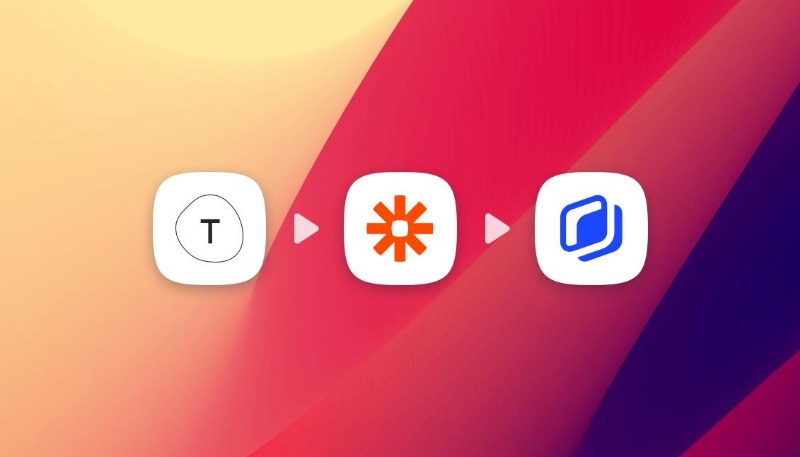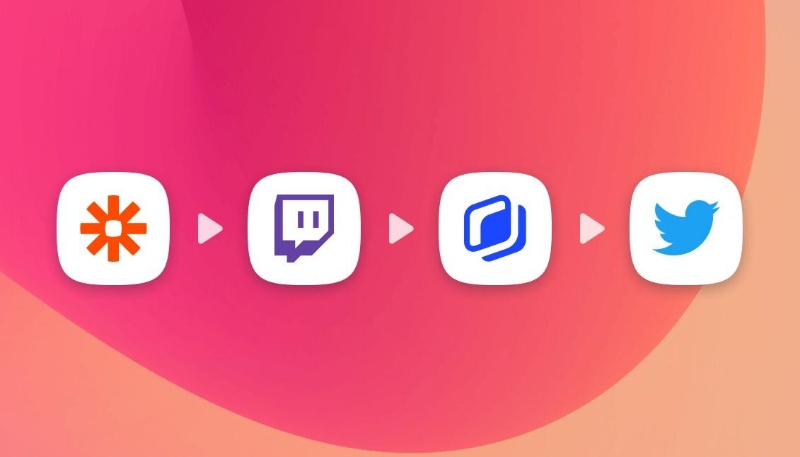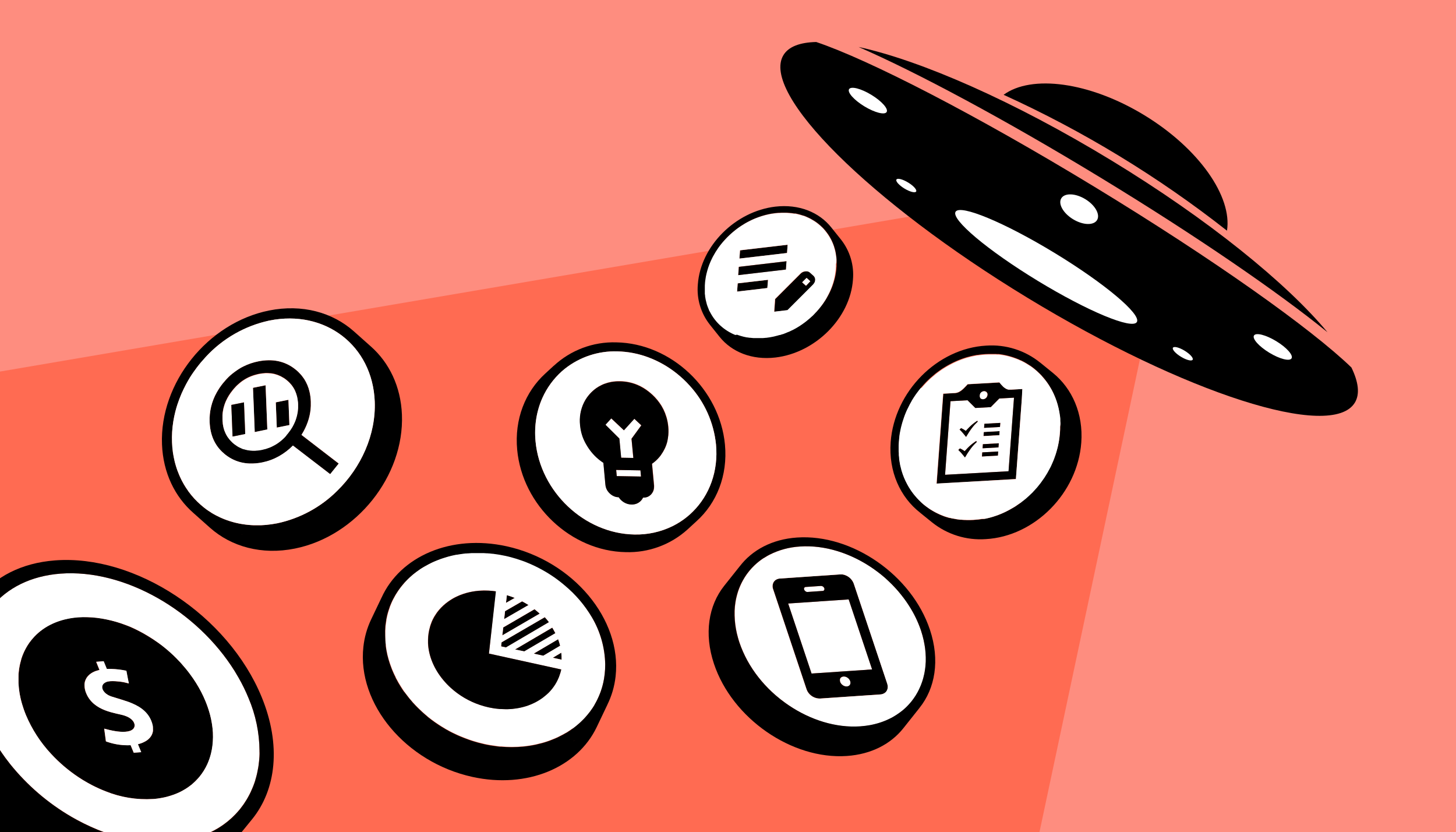8 tips for developing a creative workflow for an agency
8 tips for developing a creative workflow for an agency
.webp)
Are you worried about delays in production at your agency? Wondering how you could avoid it at your agency?
You know, for many companies, the challenge is not know-how. It's finding a smooth, efficient organization and creative production processes.
And this doesn't happen by chance. You need to do some real thinking and analysis to establish your own creative workflows.
To help you do this, I'm going to share a few tips with you here.
What is a creative workflow?
A creative workflow is a sequence of organized steps that team members follow to design and deliver creative projects (e.g. ad campaign, social media content, video creation, etc.).
This type of work process enables structured, organized project management. It is always organized in three basic stages:
- Input - this corresponds to the data or information required to launch the workflow.
- Process - refers to the steps and actions taken to transform the input data.
- Output - refers to the final result or deliverable resulting from the workflow.
Not all workflows follow the same path

Depending on the type of project, you may have to manage four different types of workflow:
- Sequential workflows: These are linear. Each step depends on the completion of the previous one.
- Machine-state flows: The sequence changes state according to conditions or events. It's like a series of steps that change in response to what's happening.
- Rule-driven flows: They follow pre-established rules to determine the sequence of actions. The rules depend on specific criteria, conditions, or predefined decisions.
- Parallel flows: Several tasks are executed simultaneously. However, each circuit in the flow usually converges on a common point at the end of the sequence.
OK. But what does this actually look like?
Let me give you an example with a sequential flow.
Let's say a marketing agency wants to optimize its creative output on ad creation processes. Its workflow might start with an in-depth briefing phase, during which the client details his objectives, target audience and creative preferences. (This is our input).

Creative team members then organize a brainstorming session to generate ideas. The designers and copywriters can then enter the creative phase.
After feedback and approval from the client, a production phase follows to finalize the creative elements. (This is our process).
Finally, a final meeting with the customer is held to present all the creative elements and validate the work done. (This is our output)
This multi-stage process forms the creative workflow. It ensures that the project progresses smoothly and efficiently from start to finish.
Why use a creative workflow?
In a creative agency, teams are constantly moving from one project to another, or from one idea to another. This can pose certain organizational and productivity problems. The creative agency workflow offers a number of advantages.
#1. Saving time
When you work with a creative team, ideas flow. But if they're not structured, you soon find yourself in a state of chaos.
With a workflow for your creative projects, each step is well defined and enforced to meet deadlines. This prevents backtracking, especially when making final adjustments just before final customer approval.
#2. Saving money

When your teams work in a coordinated way, you minimize the risk of costly errors and optimize team productivity.
If your creative agency's processes are well established and everyone's roles well defined. Your teams no longer have to waste time between tasks to find out what they should be doing.
#3. Motivating your teams
Whatever the scope of your project, your team members need to feel that their ideas and efforts are part of the overall process.
With a workflow for your creative projects, you assign roles and responsibilities to each of your team members. This makes them feel rewarded and more involved.
#4. Being flexible
Trends are constantly evolving, and so are advertising campaigns. So you need to adapt constantly.
A creative workflow gives you the agility you need to keep up with trends without overhauling your entire organization. Often, all you need to do is modify or optimize one step in your workflow.
#5. Gaining your customers' trust

Onboarding your customers is a crucial step in gaining their trust. They need to feel that everything is under control. With a workflow, you define the project based on a clear roadmap.
This reassures your customers throughout the project's progress and avoids misunderstandings, particularly about the project's objectives.
There are also special cases...
Imagine launching an advertising campaign in which marketing and creative teams work together. They need to be able to work asynchronously, but still be on the same wavelength.
This also applies to lead follow-up, for example. If you have hot leads that need to be dealt with quickly, you don't want any misunderstandings.
By establishing clear workflows, you avoid misunderstandings and make the most of your agency's creative effervescence.
Now that we've said that, you're probably wondering...
How do you create a successful creative workflow?

Creating a creative workflow is both simple and complex.
Simple, because there are just a few steps and actions to optimize. Complex because each of these steps and actions requires you to put yourself in the shoes of all the agency's stakeholders to find the most optimal organization possible.
#1. Setting objectives
If you decide to set up a workflow, it's because there's a problem to be solved within your agency. Before you create anything, make sure you've defined one or more clear objectives for your workflow.
"Saving time on creative production" or "Improving the quality of our ads" are not clear objectives. Not to mention not respecting the SMART law, they are collateral benefits of workflow implementation.
SMART is an acronym for setting ideal objectives. An objective must, therefore, be specific, measurable, attainable, realistic, and Temporary.
For example, for your workflow, "Reduce the time allocated to designing and launching an Ads campaign by 20%" is a SMART objective.
NOTE - Setting a goal doesn't mean you're going to achieve it. On the other hand, it will give you a guideline for the creation of your workflow and enable you to optimize accordingly.
#2. Analyze existing workflows to optimize them
Your agency will be familiar with creative processes that your teams follow. They may be implied, or they may depend on the project manager. Whatever the case, these processes exist, even if they are not optimal.
That's why, before considering a new workflow for your agency, start by analyzing your current organization. This will enable you to identify the biggest points of friction you and your teams are encountering.
Don't hesitate to interview the various members of your teams to understand their day-to-day issues and challenges.
#3. Determine who needs to be involved and define responsibilities
The advantage of working in a team is that you can redistribute part of the project to each member to get things done faster. However, this requires determining who does what and when.
Each task must be assigned to a team member. This person needs to be made aware of his or her responsibility and when to take action.
#4. Break down workflow steps
Each step in your creative project workflow should be delimited by a beginning and an end. This delimitation may be a handover of the project from one member to another, a decision by the manager, a validation by the customer, or something else.
You need to identify these boundaries in order to define specific rules to be applied once they have been reached. These limits are turning points at which responsibilities are redistributed to the person(s) concerned by the next step.
By doing this, you avoid stand-bys, and the project progresses smoothly.
#5. Automate as many tasks as possible

When your workflow is well established, your teams will be repeating a number of tedious tasks on a daily basis. Very often, these tasks have little or no added value.
There are many tools available to automate these tasks. Some, like our solution Abyssale, can reduce the time spent by creative teams on creative production by 90%.

Thanks to our form-based image generation tool, graphic designers' creative speed is multiplied by 10, marketing teams gain greater autonomy, and your agency can run more campaigns without recruiting.
#6. Test your new workflow
If you're setting up a new workflow, or simply modifying a step in an existing one, there's one golden rule to follow: test it!
Even if, in theory, this new feature seems more relevant, take the time to test it for at least 1 or 2 weeks. Because you'll see that trying to solve a problem can make it worse, or create a new one. Your teams and customers will point this out to you.
#7. Collect feedback from workflow users and optimize
This section completes the previous one, in that it is the workflow users who will identify the advantages and disadvantages of a work process.
This is why you need to gather as much information as possible from them, to understand their challenges and problems, and to listen to their suggestions.
Don't forget that workflows are also there to facilitate your teams' work. Take note of each of their comments and always try to propose an optimization that meets their requirements.
Speaking of optimization: not every new idea brings better results. That's why sometimes abandoning an idea and going backwards is the best option. Don't be stubborn!
DISCLAIMER - I'm not saying that you should never try to optimize your workflows. Quite the contrary!
But, understand that there is never an ideal creative workflow solution. There are simply different options with different issues. It's up to you and your teams to choose which ones you want to tackle each day.
#8. Create appropriate tutorials

If you want to make it easier for yourself to manage your creative workflows, you're going to have to educate your teams. Each member of your team needs to know what to do at each stage of the workflow.
To do this, you'll need to provide tutorials tailored to each team member involved in the workflow. A tutorial should explain step by step the actions to be taken by the person to whom it is addressed.
Here's an example for a designer. Let's imagine you need to launch a Facebook ads campaign. Your designer, in charge of creating the visuals for these ads, needs to be able to find the following information on the tutorial:
- How to access the brief from the client and marketing teams
- Where to find any multimedia elements for the visual design
- What is the deadline for creation
- Who to notify once the work is completed
- How will the work be delivered (Drive, upload to a project management application or other)
REMINDER - Don't forget that your team members are human. They can forget application procedures. For this reason, always ensure that they can access tutorials easily and at any time.
Now all you have to do is put it into practice
Now that everything's been said, all you have to do is apply these 8 tips to create, develop and optimize your agency's workflows.
One final note: keep your processes simple. Don't add more steps than necessary, and you'll see your agency's results improve.
Good luck!
Get started for free
Master Abyssale’s spreadsheet
Explore our guides and tutorials to unlock the full potential of Abyssale's spreadsheet feature for scaled content production.

Automatically generate coupons from Typeform entries with Zapier & Abyssale





